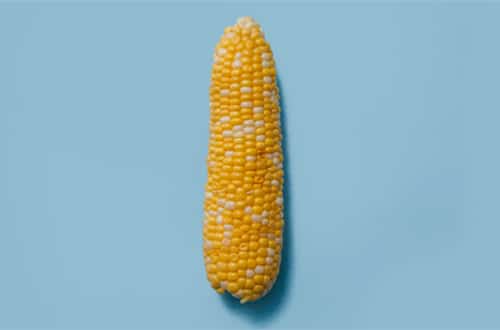

The following is an article from the Community Grants, “Food Is Political” series.
Today, corn is a divisive subject. It holds great nostalgia for me and many other Americans. Sweet, crunchy, off-the-cob at a summer barbecue, or baked into warm and comforting cornbread, corn is ubiquitous with American culture. On the flip side, corn has become a mascot for the frightening future of genetically modified (GM) crops. Some in the scientific community blame corn for fueling the junk food industry and contributing to our obesity epidemic by making calorie-dense, nutrient-deficient foods more accessible and affordable[1][2]. GM corn also poses serious risks to the people who grow it and their environments[3][4]. But is corn really the culprit in this dystopian drama? Or is it the industry of this seed that is the cause of environmental degradation and increasing health implications? What has been lost in this story is the indigenous history and rich traditions of this sacred plant.
While we may think of the plump, yellow kernels as a starchy vegetable, corn is actually the seed of a grass. It was first cultivated by Native Americans over 7,000 years ago in what is now Mexico[5]. As they migrated north and south, they took these seeds with them, knowing that if they had seeds, they could survive[6]. From the rocky terrain of the Andes mountains, to the plains of North America, corn was adaptive enough to thrive6. For these Indigenous peoples, corn not only sustained life, but was life itself; according to myth, during the creation of life, the Corn Mother gave the people corn seeds and instructions on how to grow them[7]. Packed with vitamins, minerals, and fiber, this whole grain was also important nutritionally[8]. It was and remains a staple in many societies’ diets and economies; a Native American woman reflects on its importance, saying, “Corn is so important because it allows us to live at peace. It’s our form of food security.”[9]
Indigenous farming practices also focus on nutritional and environmental health by embracing diversity. A “three sisters” garden consists of corn, beans, and squash[10]. Nutritionally, corn provides carbohydrates and fiber, beans provide protein, and squash many other vitamins and minerals[10]. Corn stalks allow beans to climb up and grow, beans enrich the soil with nitrogen, and large squash leaves shade the soil and prevent weed growth10.
What has been lost in this story [of corn] is the indigenous history of this sacred plant. If we could only relearn them, the rich history and traditions of corn could save the world.
Indigenous farmers take pride in preserving their corn. Louie Hena, a member of the Tesuque and Zuni Pueblos in New Mexico, says, “as keeper of the corn, the corn has come up with us through our migrations, sustaining us. Our first mothers were the blue corn and white corn women.”[6] Today, corn remains a key component in rituals, community gatherings, and spiritual stories[11]. However, industrial agriculture has threatened the indigenous culture, food security, and environmental health that corn provides.

In the sort of agriculture that has dominated America for the past several decades, the bottom line is always profit and crop yield is imperative. High-yield GM corn varieties are patented by seed corporations[12][13]. To maximize profits, corn is grown in monoculture farms rather than together with beans and squash (or anything else, for that matter). Without the soil nutrients and weed protection beans and squash provide, artificial fertilizers and herbicides must be applied[14][15]. These chemicals contaminate nearby water ecosystems and expose farm workers to dangerous levels. Pesticide exposure has been shown to affect reproductive health and has been linked to tens of thousands of cancer cases[16][17].
But ultimately, the consequences stretch far beyond the US. The export of GM corn and industrial farming practices have threatened the food sovereignty of communities around the world. When the US ships tons of cheap, plump corn to countries in Latin America, native growers can’t compete. Enthralled by the profits, countries like Perú have been seizing Indigenous peoples’ lands in order to plant GM seeds. As a result, native seeds and agricultural practices are becoming extinct[18].
What chance do Indigenous peoples stand when their history and seeds are being wiped off this planet? Many of them are growing, saving, and sharing their seeds. Native Seeds is preserving the seeds of over a thousand indigenous seed varieties[19]. Your own communities may have seed banks. Where I live, Jennifer Levine operates the Durham Seed Library in North Carolina[20]. She emphasizes the importance of growing seeds native to the state and the sense of community that is fostered when patrons return later to share the seeds they have saved. You can find a seed library in your community and honor these native seeds.
We must take a step back and understand how the abuse of corn has violated the integrity of Indigenous communities and stifled the power of traditional agriculture. So, next time you bite into a cob of corn in the summer, or bake up some cornbread over the holidays, recognize and honor the indigenous history behind this powerful seed.
Copyright 2024 Center for Nutrition Studies. All rights reserved.